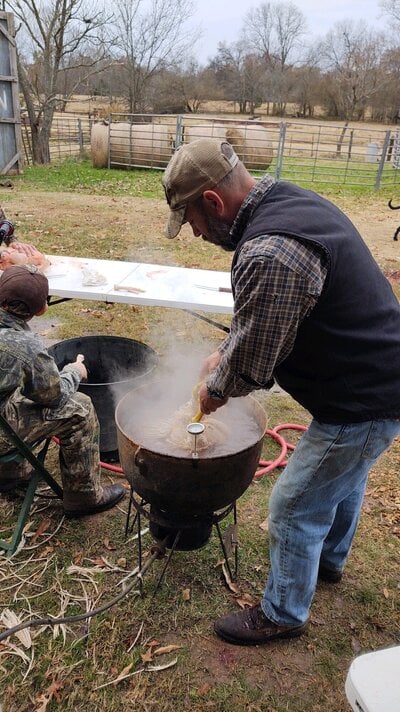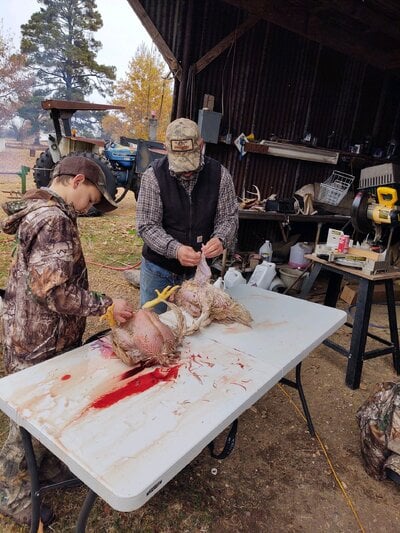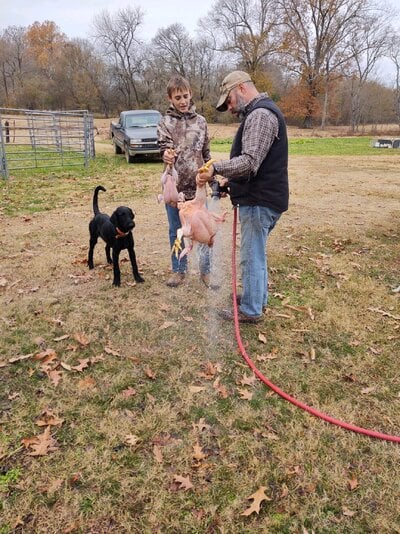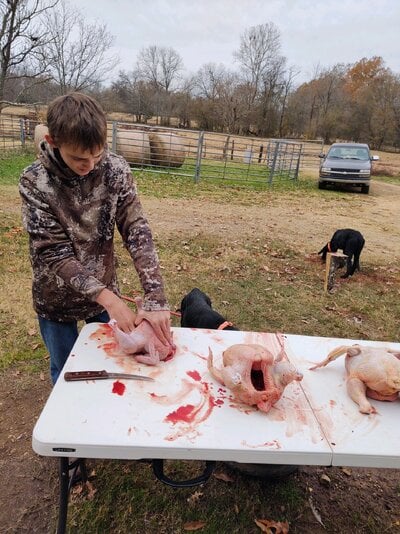Hello everyone!
Come spring I think I am going to raise some meat birds. I plan on starting with some chickens, then eventually working my way to ducks and turkeys. However, I have a few questions.
The first is what equipment do you guys use? I know there are plucking machines, and I think I eventually want one, but not for the first time.
What, if any, shears/scissors/knives do you guys use? What other equipment/supplies?
What does your setup look like?
Should you weigh the chicken after its innards, feet, and neck are gone? Or just when the innards are gone?
What temperature do you put the water to make plucking easier?
What do you guys do with the extra unwanted items?
Any tips/tricks?
Come spring I think I am going to raise some meat birds. I plan on starting with some chickens, then eventually working my way to ducks and turkeys. However, I have a few questions.
The first is what equipment do you guys use? I know there are plucking machines, and I think I eventually want one, but not for the first time.
What, if any, shears/scissors/knives do you guys use? What other equipment/supplies?
What does your setup look like?
Should you weigh the chicken after its innards, feet, and neck are gone? Or just when the innards are gone?
What temperature do you put the water to make plucking easier?
What do you guys do with the extra unwanted items?
Any tips/tricks?

 . Blood, Guts, Feathers everything goes into the garden.
. Blood, Guts, Feathers everything goes into the garden.


